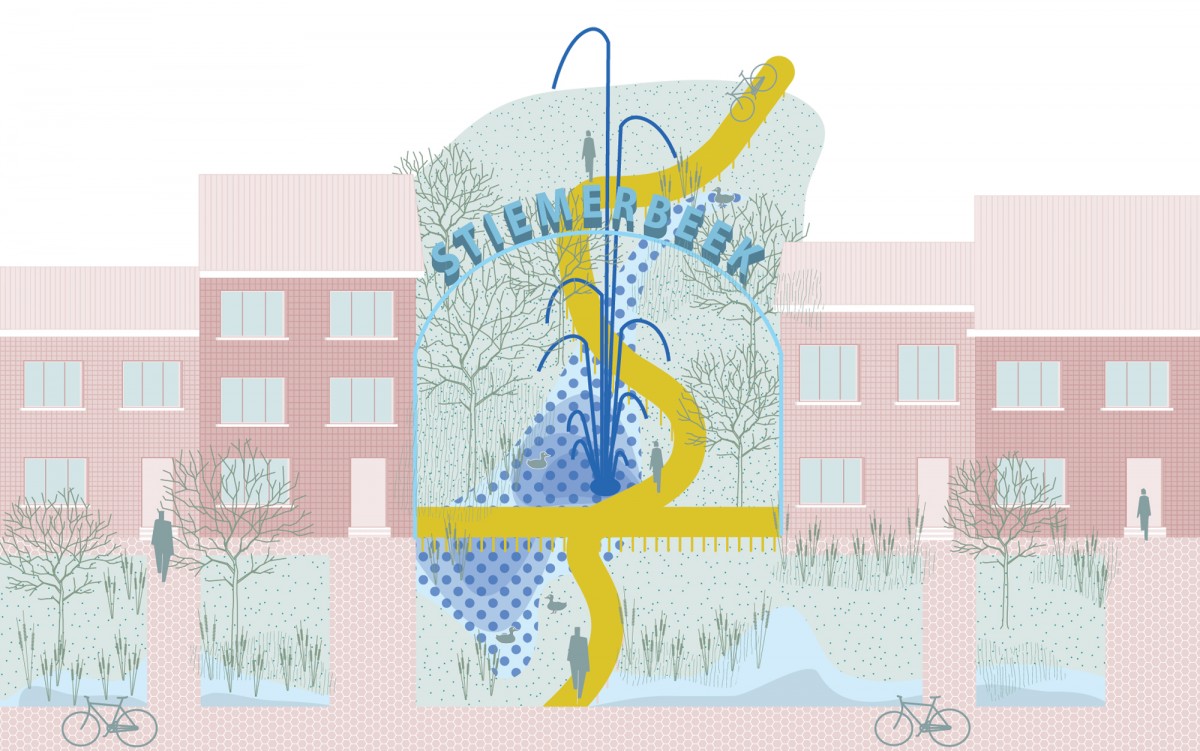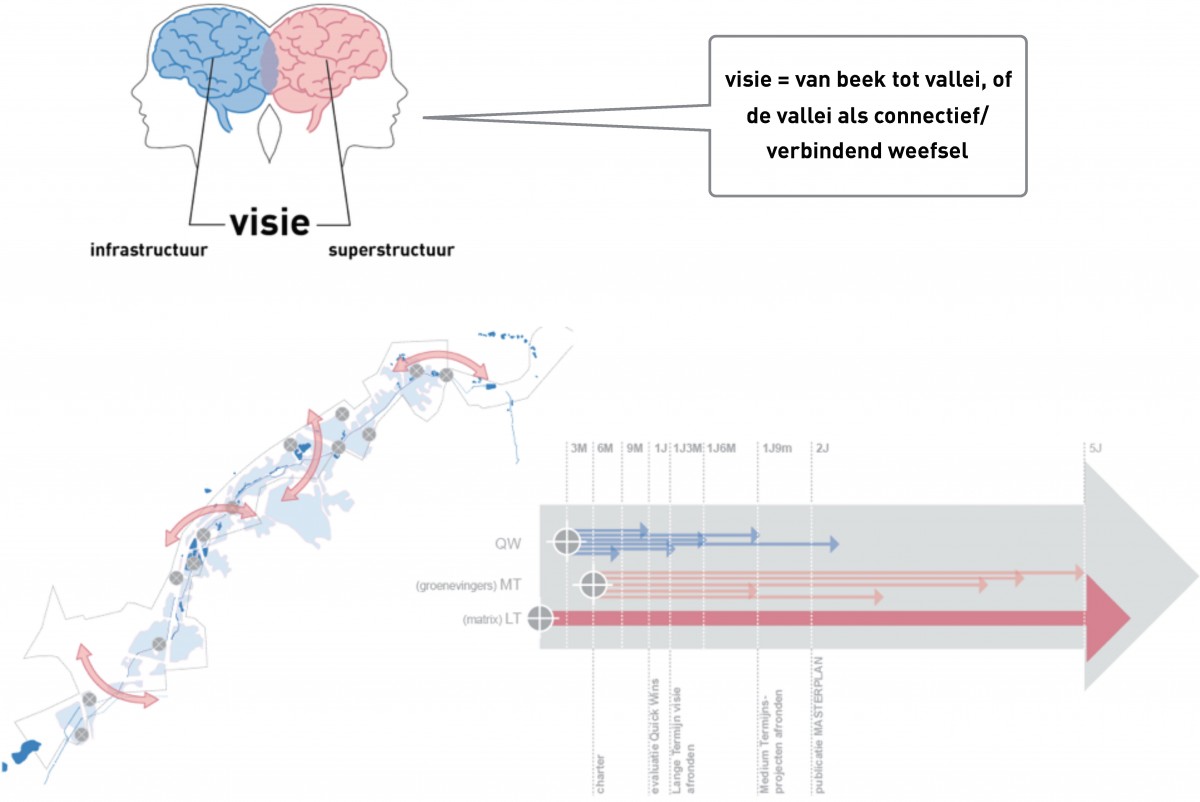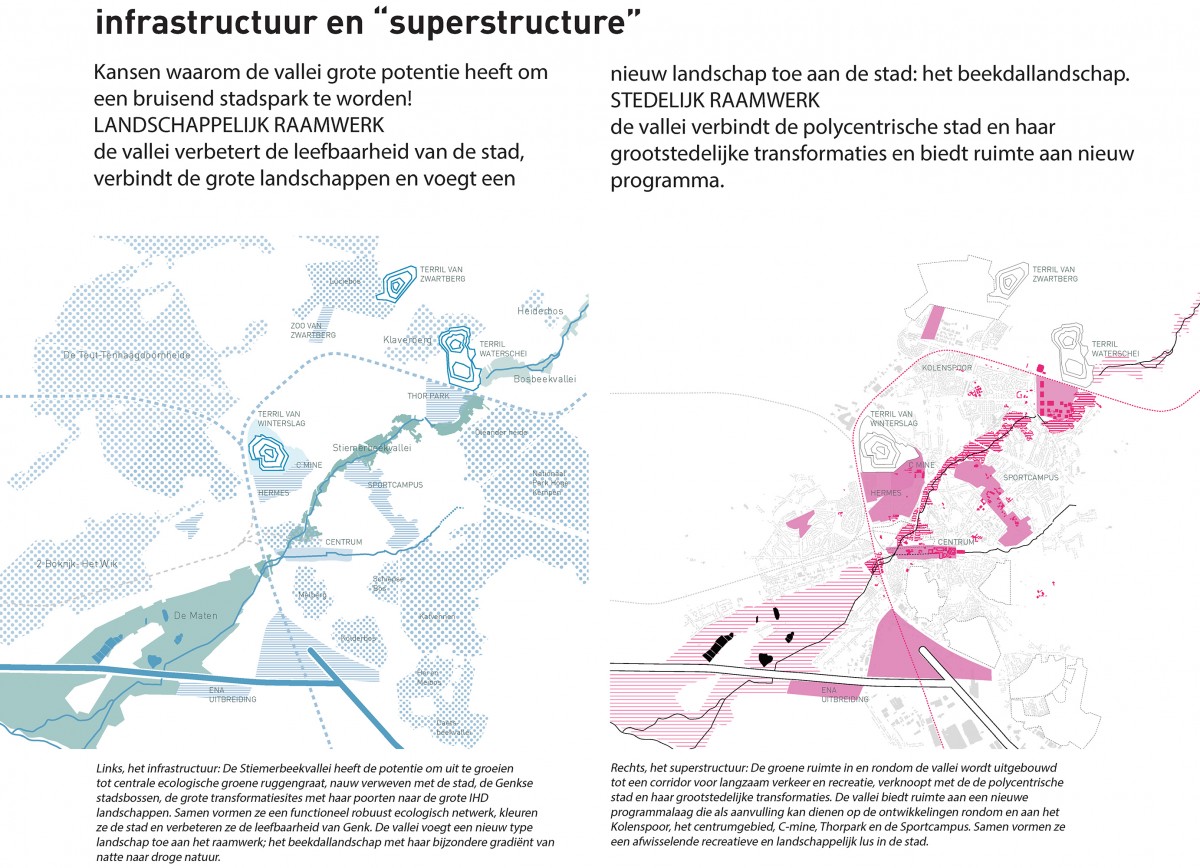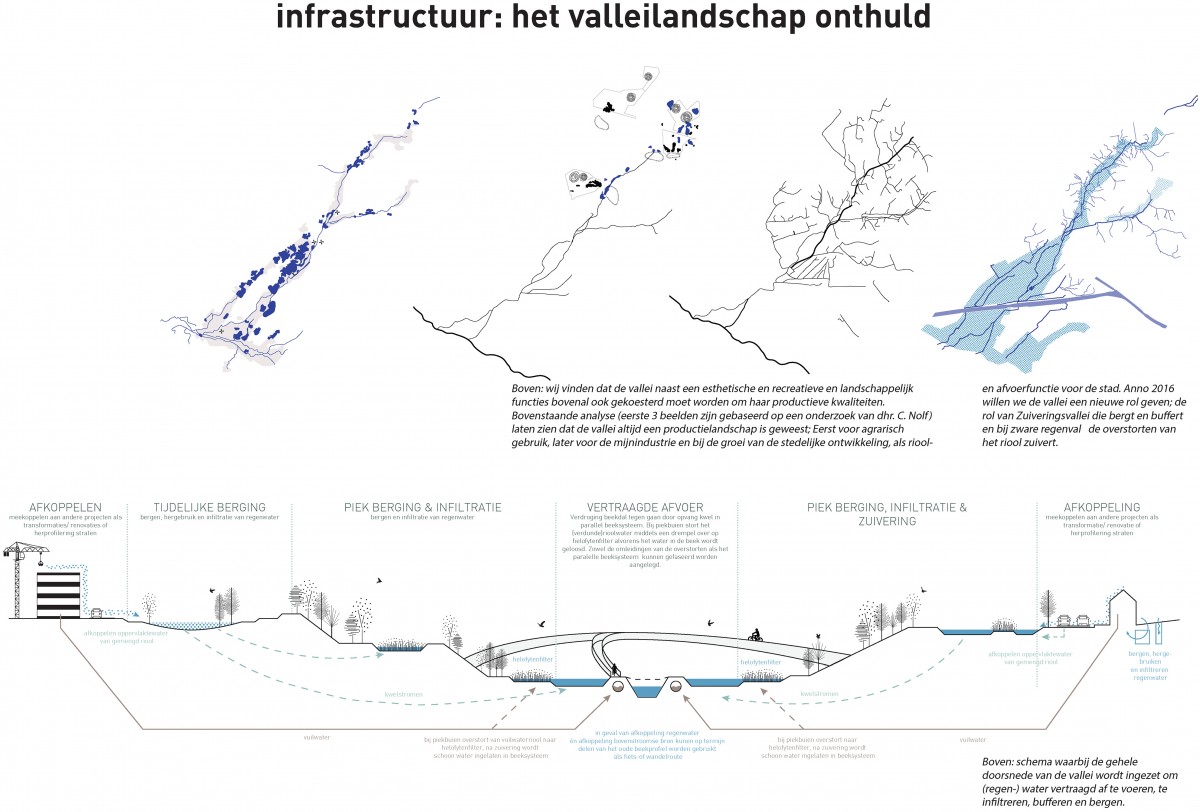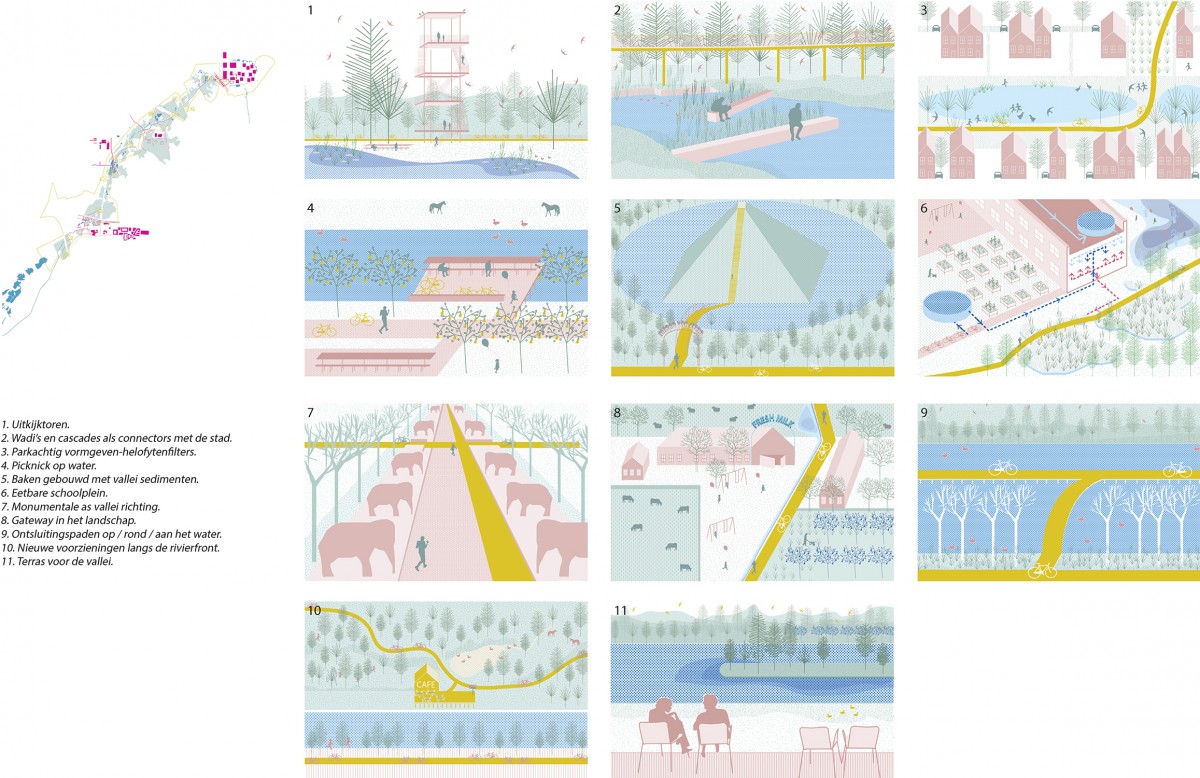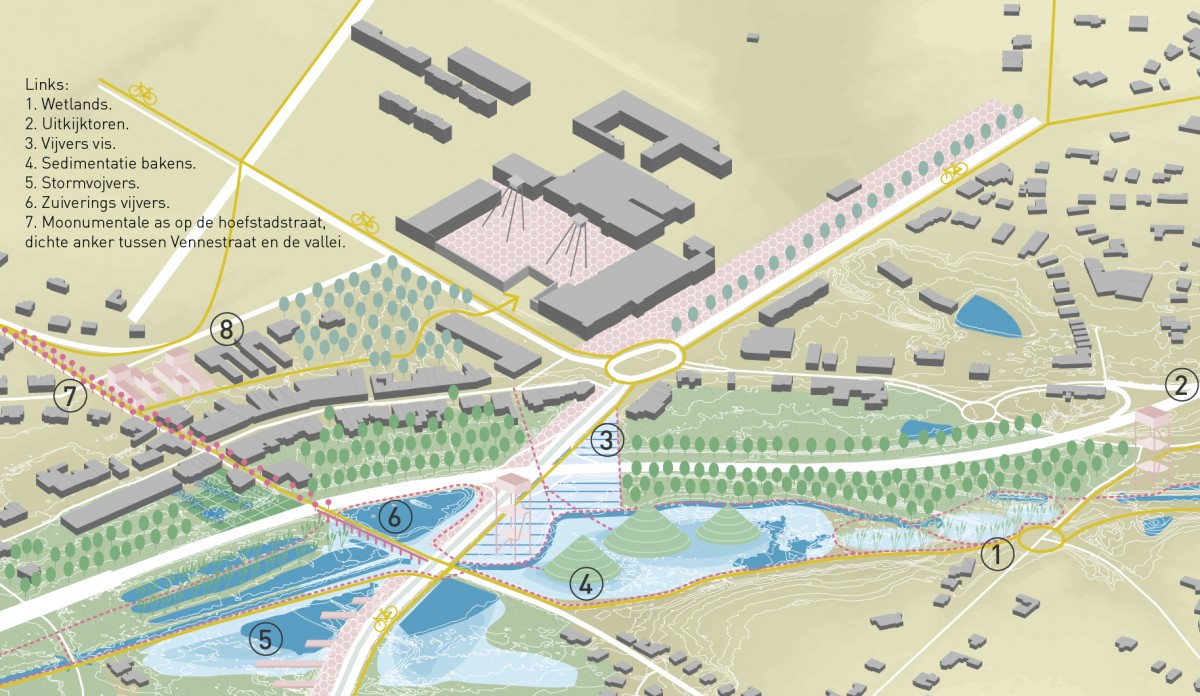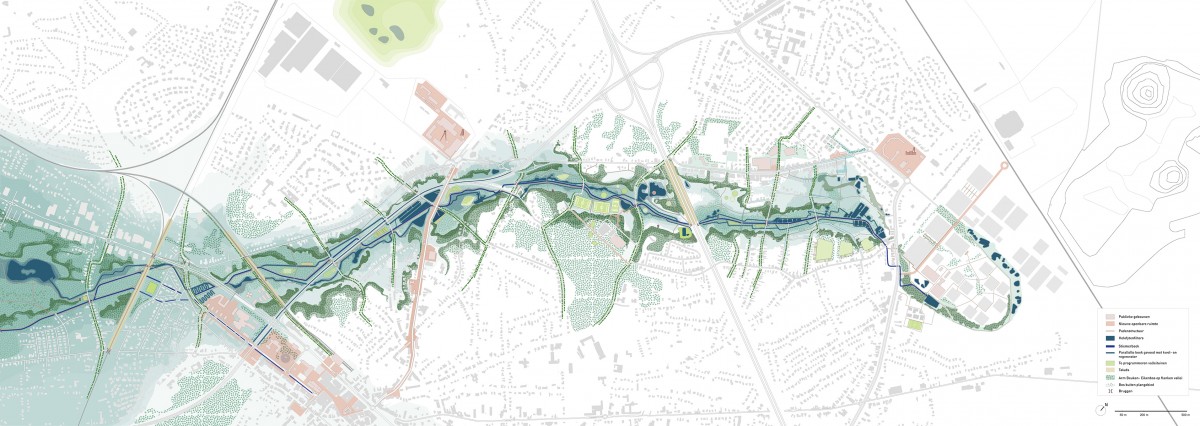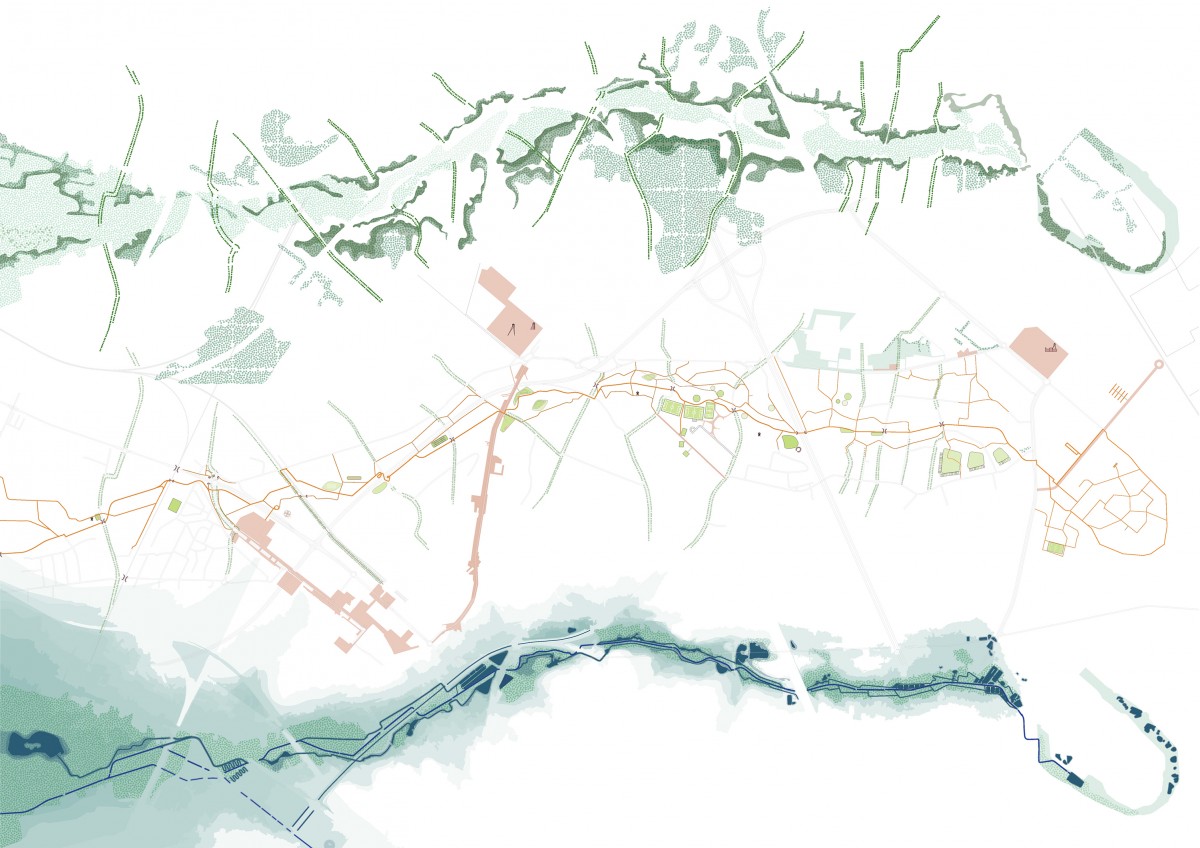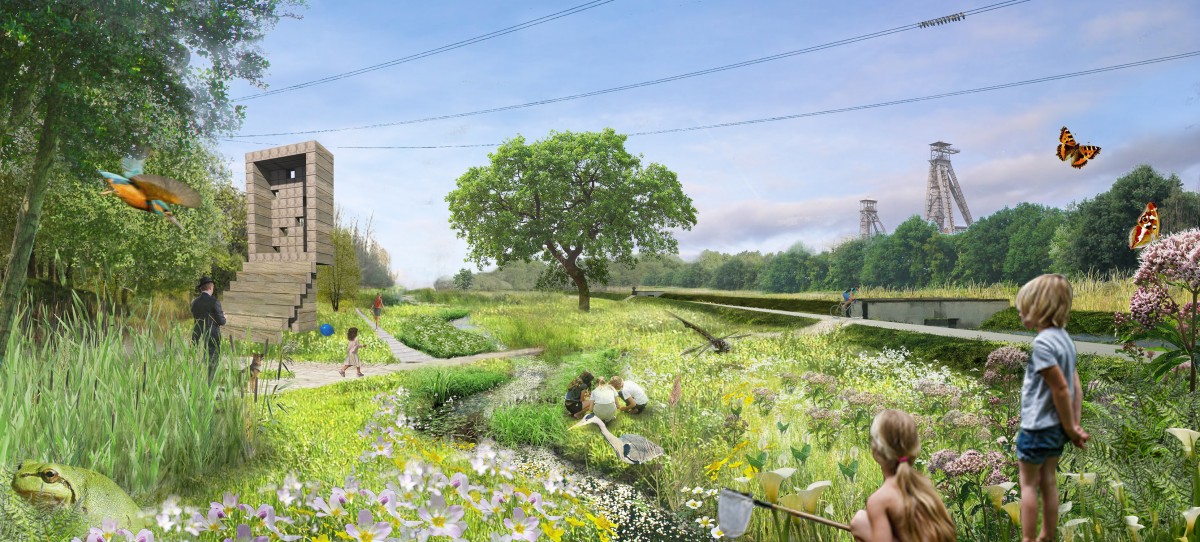This project was drawn up in the framework of ‘Open Oproep 2903’, concerning the drawing of a master plan for the development of the Stiemerbeek Valley into a linear, urban park with a high natural and experience value that connects various, strategic urban sites as a blue-green artery.
The master plan should define the priorities for the development of the Green Blue Network chronologically, in dialogue with as many actors involved as possible. It defines the concrete interventions and actions that will trigger the change, identifies the resources that will be needed and organizes the concrete phasing. It is also the task of the master plan to examine how the various actions can be combined to create the necessary synergies to develop a unified urban park.
At the outset, we were overwhelmed by the large amount of existing plans and projects for this site: Many actors each making their own spatial claims and initiatives that continue to multiply, planned major investments – in the near or distant future – and the reconversion of the economic model that has dominated Genk's history... these are not small changes!
The Western planning model is built around the idea that big plans are better than smaller ones, and that every place has an infinite capacity to reinvent itself over and over again (also in terms of available resources to make it succeed) - the makeability of the city, as it is called. We belong to this Western tradition, but we are convinced that sometimes it can also be better to do less than more, as well as to set clear priorities about what comes first and what comes later. Does the Green Blue City Park better articulate existing city projects or offer a worthy alternative to the existing system of urban water management in the Valley? Should the City Park be developed first or rather follow the new developments around the station?
This tender merely defines the possible guidelines that frame the preparation of a master plan. Guidelines that, through the multi-voiced and complex process of drafting a master plan, will be confirmed or denied. First and foremost, it includes our reading of the place and its potential: "The valley as a connective fabric.” It then looks at the transformation of the place through two storylines; revealing the valley landscape and acquiring its various forms of urbanity. The first storyline focuses on the (green-blue) infrastructure, while the second focuses on the "superstructure" (program and mobility). Because the master plan is not a blueprint, the actions or projects of its realization belong to different time horizons. Here we propose at least three: the transformation of the green-blue infrastructure in the long term (the so-called matrix of the valley); the green fingers anchoring urban projects in the valley in the medium term and the quick wins in the short term – actions that can be implemented almost immediately, in close cooperation with local actors.
